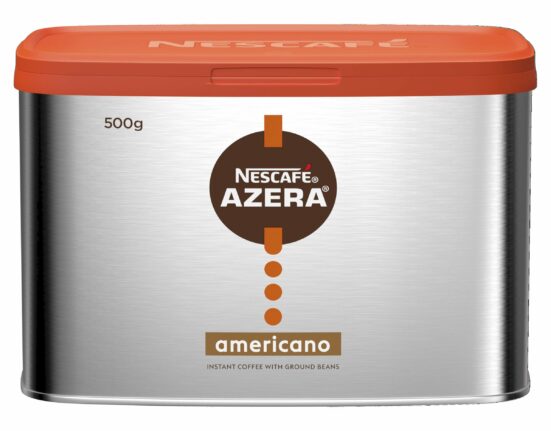Espresso machines come in a multitude of types, each serving distinct preferences and needs of coffee aficionados. The allure of espresso often lies in its rich, nuanced flavor profile and the art of crafting a perfect cup. This exploration delves into the various categories of espresso machines, elucidating their functionalities, advantages, and the intricate mechanics that render each type unique.
The Espresso Machine Landscape: Understanding the Varieties
At its core, the espresso machine is designed to brew coffee by forcing a small amount of nearly boiling water through finely-ground coffee beans. This fundamental process births the coveted espresso. However, the journey to achieving this delicacy diverges greatly depending on the machine in use. Broadly, espresso machines can be categorized into manual, semi-automatic, automatic, and super-automatic machines. Each of these types merits a closer examination to appreciate their operational distinctions and user experiences.
Manual Espresso Machines: The Artisan’s Choice
Manual espresso machines, often revered as the “traditionalists” of the coffee world, require hands-on intervention to achieve the perfect brew. Baristas and coffee enthusiasts who gravitate towards these machines typically revel in the tactile experience they offer. Utilizing a lever mechanism, users manually control the pressure and water flow, affording them significant leverage over the brewing process. This results in an unparalleled opportunity to experiment with various variables, such as grind size, tamp pressure, and extraction time.
These machines demand expertise and finesse, and while they may present a steep learning curve to neophytes, the rewards are often deemed worth the effort. The meticulously crafted espresso produced from manual machines tends to exhibit a complexity in flavor that resonates deeply with connoisseurs. Brands such as La Pavoni and Elektra epitomize this artisanal approach, although their price points and maintenance might deter casual users.
Semi-Automatic Espresso Machines: A Balance of Control and Convenience
Semi-automatic espresso machines serve as a compelling bridge between the manual and automatic realms. They empower users with the capability to control the timing of the extraction while automatically regulating water pressure. This hybrid model appeals to both newcomers and seasoned enthusiasts, as it balances ease of use with the ability to engage in the craft of espresso-making.
The typical semi-automatic espresso machine features a built-in pump, allowing for consistent pressure during extraction. Users still retain an important role in the process, as they must control variables such as dosing and tamping. Renowned manufacturers like Gaggia and Rancilio have cultivated their reputations by producing models that embody this principle of dual control. The accessibility provided by these machines unveils a pathway for aspiring baristas to hone their skills without succumbing to overwhelming complexity.
Automatic Espresso Machines: Precision at Your Fingertips
In the automation age, automatic espresso machines emerged as an attractive option for those desiring precision and consistency without intensive labor. These machines utilize built-in timers, allowing users to pre-set their extraction times, thus ensuring a uniform brew every time. Unlike their semi-automatic counterparts, where user intervention is essential to achieve the desired extraction duration, automatic machines remove much of the manual effort required.
The convenience offered by automatic machines makes them particularly popular in busy environments or households where multiple users may have differing espresso preferences. Numerous brands, such as Saeco and De’Longhi, have integrated advanced technologies into their designs, encompassing features like temperature stability and programmable settings. This focus on user-friendliness does not come without a trade-off; coffee aficionados might find that the artistry of espresso-making diminishes as automation takes precedence.
Super-Automatic Espresso Machines: The All-in-One Solution
The zenith of convenience in the espresso machine hierarchy, super-automatic machines, envelop the brewing process within an all-encompassing design. Incorporating grinders, milk frothers, and even cleaning systems, these machines epitomize efficiency. Users can transform a few ingredients into a café-quality espresso with the mere touch of a button. This exceptional level of convenience has garnered considerable popularity, particularly among those seeking an effortless coffee experience.
However, the complexity behind these machines lies not merely in their operation but also in their inner workings. Super-automatic machines often incorporate sophisticated technologies, such as pressure sensors and microprocessor controls, which ensure optimal brewing conditions. Nevertheless, this complexity can lead to challenges. Maintenance and repairs may require specialized knowledge or service, discouraging individuals who are adept with manual methods. Notably, brands like Jura and Breville lead the market in producing super-automatic models that deliver a variety of coffee styles and flavors.
Technical Aspects of Espresso Machines: What Lies Beneath
Regardless of the type of espresso machine, understanding the underlying technical components is pivotal for optimizing the brewing experience. Key aspects include the pump system, boiler temperature, and pressure stability. An efficient pump is crucial for generating the optimal pressure needed for espresso extraction, typically set at around 9 bars. Models equipped with rotary pumps are often favored in commercial settings, as they provide consistent performance and noise reduction.
The temperature of the water used in brewing significantly affects the final taste of the espresso. Ideally, water temperatures should be between 90°C and 96°C to ensure proper extraction without burning the coffee. Many advanced machines employ dual boilers or heat exchanger systems to maintain optimal temperature control throughout the brewing process, allowing for consecutive shots of espresso without temperature fluctuation.
Cleaning and Maintenance: The Lifeblood of Longevity
Espresso machines, particularly if utilized frequently, necessitate proper cleaning and maintenance practices to sustain their functionality and output quality. Coffee oils and residues can accumulate, leading to off-tasting brews and potential mechanical issues. Routine upkeep involves descaling, cleaning the portafilters, and ensuring that internal components remain clear of blockages.
Many modern machines come equipped with automatic cleaning cycles, making maintenance more manageable. Nevertheless, users should still engage in regular manual cleaning routines to preserve machine integrity and longevity. The nuanced understanding of one’s espresso machine not only enhances the brewing experience but also fosters a deeper appreciation for the craftsmanship associated with coffee-making.
The Social and Cultural Impact of Espresso Machines
The espresso machine carries with it a cultural significance that transcends its mechanical utility. Within many societies, coffee consumption facilitates social interaction and communication. The espresso machine often serves as a focal point in cafés, symbolizing community bonding and discourse. This multifaceted role contributes to the ongoing exchange of ideas and cultural practices centered around coffee consumption.
Moreover, the growing interest in specialty coffee and the artisanal approach to brewing have led to a collective reevaluation of not just coffee itself, but also the stories and journeys that accompany it. In this sense, the espresso machine is not merely a culinary tool; it stands as a testament to a global movement that champions craftsmanship, sustainability, and a reconnection with the origins of our beverages.
In summation, espresso machines signify more than mere technology for brewing coffee. They embody a confluence of skill, preference, and cultural significance, inviting users to explore the rich tapestry of flavors and experiences inherent in each cup. From the artisan’s manual touch to the convenience of automation, understanding the diverse landscapes of espresso machines serves to deepen one’s appreciation for one of the world’s most beloved beverages.








Leave feedback about this